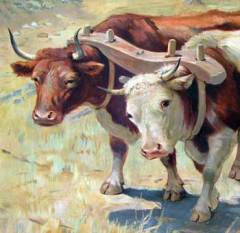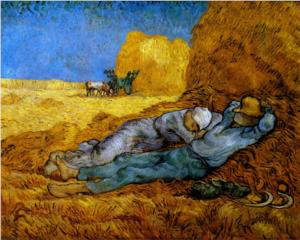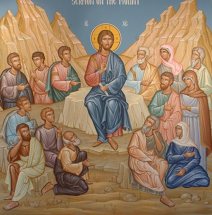Sheep and Goats
Matthew 25:31-46
31 “When the Son of Man comes in his glory, and all the angels with him, he will sit on his throne in heavenly glory. 32 All the nations will be gathered before him, and he will separate the people one from another as a shepherd separates the sheep from the goats. 33 He will put the sheep on his right and the goats on his left.
34 “Then the King will say to those on his right, ‘Come, you who are blessed by my Father; take your inheritance, the kingdom prepared for you since the creation of the world. 35 For I was hungry and you gave me something to eat, I was thirsty and you gave me something to drink, I was a stranger and you invited me in, 36 I needed clothes and you clothed me, I was sick and you looked after me, I was in prison and you came to visit me.’ 37″Then the righteous will answer him, ‘Lord, when did we see you hungry and feed you, or thirsty and give you something to drink? 38 When did we see you a stranger and invite you in, or needing clothes and clothe you? 39 When did we see you sick or in prison and go to visit you?’40 “The King will reply, ‘I tell you the truth, whatever you did for one of the least of these brothers of mine, you did for me.’
41 “Then he will say to those on his left, ‘Depart from me, you who are cursed, into the eternal fire prepared for the devil and his angels. 42 For I was hungry and you gave me nothing to eat, I was thirsty and you gave me nothing to drink, 43 I was a stranger and you did not invite me in, I needed clothes and you did not clothe me, I was sick and in prison and you did not look after me.’ 44 “They also will answer, ‘Lord, when did we see you hungry or thirsty or a stranger or needing clothes or sick or in prison, and did not help you?’ 45 “He will reply, ‘I tell you the truth, whatever you did not do for one of the least of these, you did not do for me.’ 46″Then they will go away to eternal punishment, but the righteous to eternal life.”
———————-
One of the more esoteric and potentially frightening texts in the New Testament is this Matthew 25 recounting of Jesus’ “The Sheep and Goats” narrative. Who exactly are these sheep? Or these goats? How best do we interpret this passage given the historic and religious contexts in which Jesus taught?
The gospel of Matthew, a biography of Jesus written from a Jewish perspective, builds on the theme of final judgment across chapters 23-25; culminating in crescendo in this agrarian/shepherd metaphor with its intended message aimed primarily at its religious Jewish audience.
Intentionally, this passage is intricately linked with the preceding parable of the ten virgins (vs.1-13) and the parable of the talents (vs.14-30). When these are taken altogether, the core message is unmistakable: Be prepared, get ready, the bridegroom/master/shepherd/king is coming!
In this devotional, we will look at the sheep and goats as well as the shepherd-king who tends them.
1. SHEEP and GOATS
The simile used by Jesus would make perfect sense to his hearers in 1st century Palestine agrarian society. While sheep and goats have many similarities, they do diverge within scientific classification: Each is a specific species and genus with a differing amount of chromosomes. All that to say that shepherds would tend them together, but at a certain point would separate them for whatever their final destination or use might be.
But who is Jesus speaking of? Who are these sheep and goats? This passage can be somewhat obscure in that there have historically been a couple different ways it has been interpreted.
-
One way this passage has been interpreted is in a social-justice framework: That Jesus is speaking about how they, the religious Jews, treat the poor and disadvantaged in their midst. The scholars who come to this conclusion do so in taking the terms food, drink, clothes, sick, and prison in a mostly literal sense while defining the “least of these” (vs.40,45) as being the needy within the community. Therefore, the application to today would be that the Church must take care of the poor, disadvantaged, and marginalized in our society (and across the globe); delivering loving care and justice in Jesus’ name.
-
Another way this passage has been interpreted is in a disciple-specific framework: That Jesus is speaking about the way the outsiders (nations and individuals) welcome and treat his disciples, including those who would become his followers generations later. The scholars who interpret the text this way come to this conclusion by taking the terms food, drink, etc as mostly figurative (think Jesus’ statements such as Jn 6:35, “I am the bread of life; whoever comes to me shall not hunger, and whoever believes in me shall never thirst.”). They also emphasize the definition of the word “brothers” (adelphos ἀδελφός) in vs.40 to mean Christian believers; especially those who are marginalized and even persecuted for their faith in Christ.
So which is it? Treat the poor and disadvantaged well? Or treat the followers of Christ (with their message) well? Certainly both explanations of this text have validity and, in a strong sense, both are true.
But if we step further and take into account other parables of Jesus such as the “Wheat and the Tares” (Mt 13:24-30) as well as “A Tree and its Fruit” (Mt 7:21-23) with it’s “Depart from me, I never knew you” climax, it becomes more clear that Jesus is explaining that within the Church (what theologians call the “Visible Church”; those inside the community, claiming to be participants), there is a subset of true regenerated followers of Christ side-by-side with a subset of others who are not. Whether these others are “playing church” or deeply in denial about their relationship with Jesus (or any other reason) we simply don’t know.
Here is what we do know: In the Church of Jesus Christ, there are both sheep and goats who share a similar outward appearance and yet possess a completely different makeup in their internal spiritual DNA.
To restate it another way, the contrast that Jesus makes is between those who are focused and centered primarily on Him, with a resulting concern for others (sheep) -vs- those who are focused and centered primarily on themselves with a resulting self-focus on their own well-being, reputation, approval, and comfort (goats).
And Jesus communicates that the final outcome (and proof) per verse 46 is eternal life for the sheep and eternal punishment for the goats. Since our text doesn’t give us any more particulars on what that punishment entails, suffice it to say as per C.S. Lewis’ famous quote from The Great Divorce, “There are only two kinds of people in the end: Those who say to God, “Thy will be done,” and those to whom God says, in the end, “Thy will be done.” All that are in Hell, choose it. Without that self-choice there could be no Hell. No soul that seriously and constantly desires joy will ever miss it. Those who seek find. Those who knock it is opened.” (Chap. 9, pp 72-73).
This topic may be uncomfortable to many. We’re typically not used to considering that those who are sitting side-by-side with us in pews (and especially those up on platforms preaching and leading) might not be truly “sheep” after all. It’s a very sobering thought but the bottom line is that we are not to look at others and ask whether they are sheep or goats (or wheat or tares), but instead to look at ourselves; to take spiritual stock of the work of God’s Holy Spirit within our own hearts.
Is Jesus Christ living his life internally within our hearts to the degree where his love flows out in care, compassion, and service to others? Are we enthralled with the King to the point that the good works we perform are so innate and inherent to our Christ-filled souls that we’re not always even aware of performing them? If we are asking those questions with sincerity, that’s a good sign. And, as always, we’re called to a continual life of repentance; receiving grace where we continually fall short.
2. The Shepherd-King
Jesus’ message of warning across the entire gospel of Matthew is clear: Get ready and be prepared, for the Lord is coming. Though he initially came to Bethlehem in incarnational humility and poverty, he will return in full divine glory (doxa δόξα) to “sit on his throne ” (vs 31), where he will rule and reign over everyone and everything forever.
Therefore Jesus is not only the absolute fulfillment of the shepherd metaphor in all of scripture, but of the kingly imagery as well. He is everything that matters.
So we can trust and rely that his judgments are good and perfect because he sees beyond the externals into the deep internal place in our hearts where he resides by the power of His Holy Spirit.
#Wade S
—————————
From the gospel reading for the “Feast of William Wilberforce, 1833”. Wilberforce was leader of British abolition movement to eradicate race-based slavery.
(the end)

















